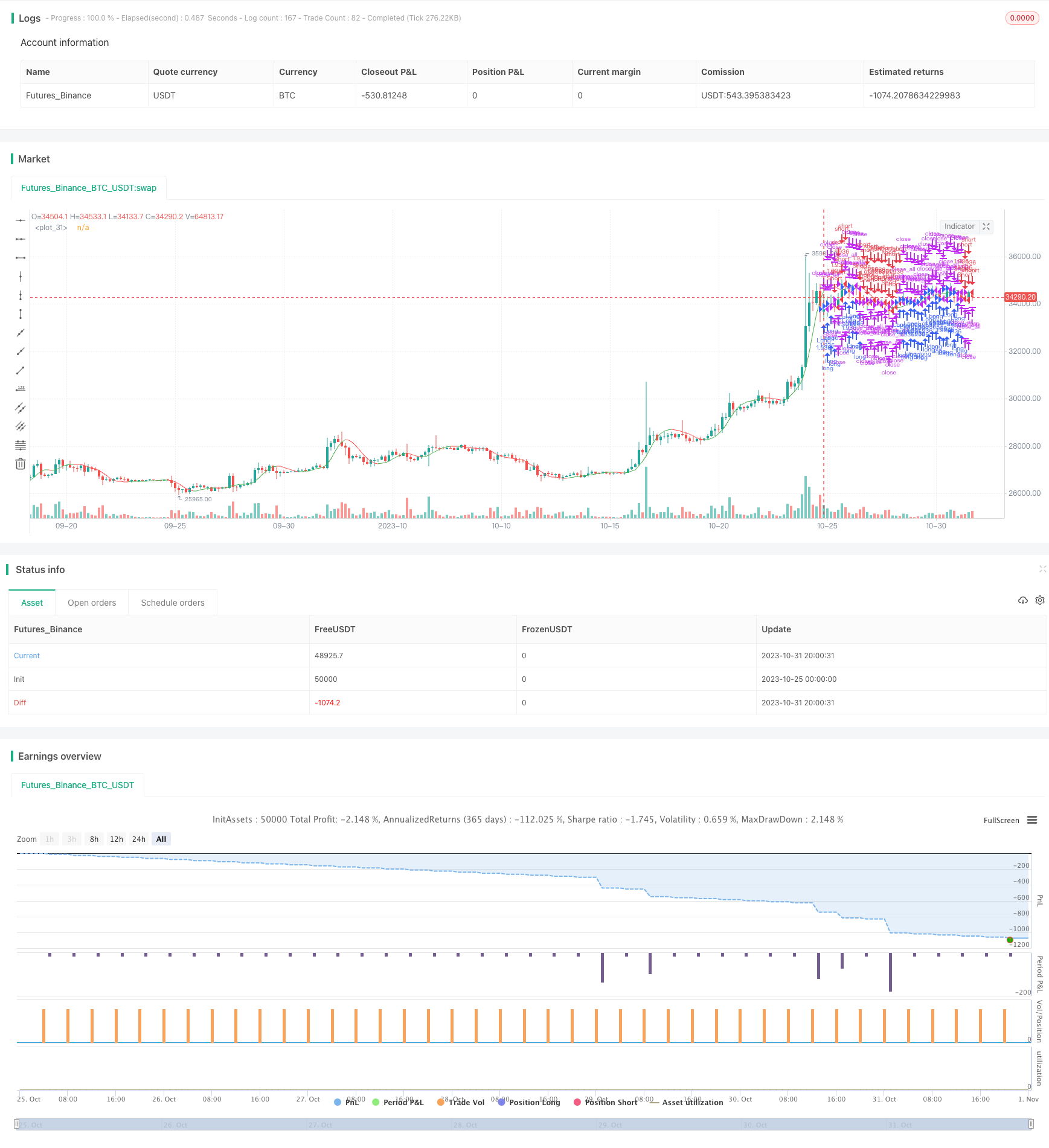
概述
本策略基于Hull移动平均指标构建趋势跟踪交易系统,根据Hull曲线的方向决定做多做空,属于典型的趋势追踪策略。
策略原理
本策略使用Hull移动平均线作为主要技术指标。Hull移动平均线由美国交易员Alan Hull于2005年提出,是在移动平均线基础上进行改进,使用平方根函数减少了移动平均线的滞后性。
具体来说,Hull移动平均线包含两个平均线,一个是期间n的移动平均线MA(n),另一个是期间n/2的移动平均线MA(n/2)。两条平均线之差构成Hull差值曲线,再对Hull差值曲线计算其自身的移动平均线,即得出Hull曲线。
当Hull曲线上涨时,代表短期移动平均线上穿长期移动平均线,为触发做多信号;当Hull曲线下穿时,代表短期移动平均线下穿长期移动平均线,为触发做空信号。
本策略设置Hull期间n为16,分别计算n/2=8期移动平均线、n=16期移动平均线,并计算两者之差的Hull曲线,再对Hull曲线计算自身的n=4期移动平均(取平方根n=4)。当Hull曲线上穿时做多,下穿时做空。
策略优势分析
相比普通移动平均线,Hull移动平均线具有以下优势:
减少滞后。运用平方根函数,Hull曲线更贴近价格,能够更快捕捉价格转折。
减少假突破。传统移动平均线tend to generate more false crosses,而Hull曲线可以过滤掉一些噪音,避免不必要的交易。
parameter少。Hull曲线只需要一个n参数,方便优化,而双均线系统需要优化两个参数。
可自定义。Hull曲线的n值可以根据市场调整,可自定义周期,适应不同品种。
系统性强。Hull曲线系统性强,规避人工选择,遵循机械交易系统的一致性。
风险分析
尽管相比移动平均线系统,Hull系统具有诸多优点,但仍存在以下风险:
趋势跟踪策略本身的局限。Hull系统作为趋势跟随策略,在趋势剧烈变化时容易止损。
容易产生频繁交易。Hull曲线的快速响应特征会增加交易频率,容易过度交易。
parameters易过优化。只有一个参数n易导致过度优化,curve fitting的风险。
效果因品种不同而异。Hull系统对一些具有高波动率的品种效果不佳,需要针对品种调整参数。
策略优化方向
基于上述Hull移动平均策略的局限性,可以从以下方面进行优化:
结合附加指标过滤交易信号,避免假突破。可加入MACD,KD等指标判断趋势。
增加止损策略,控制单笔损失。如设置移动止损或挂单止损。
优化参数n的选择,避免过优化。可以采用walk forward analysis方法进行滚动优化。
结合机器学习技术动态优化参数。使用RNN等模型预测参数n的最优值。
分品种参数优化。使用机器学习对不同品种参数进行优化拟合。
优化仓位管理,降低交易频率。可采用固定份额法则等方法。
总结
Hull移动平均策略是一个典型的趋势跟踪策略。相比移动平均线具有优势,但也存在过优化,频繁交易等问题。我们可以通过参数优化,止损策略,仓位管理等方法来改进该策略。Hull系统简单实用,值得进一步研究与优化,可结合更多指标和技术来制定一个稳定的交易系统。
/*backtest
start: 2023-10-25 00:00:00
end: 2023-11-01 00:00:00
period: 4h
basePeriod: 15m
exchanges: [{"eid":"Futures_Binance","currency":"BTC_USDT"}]
*/
//Noro
//2018
//@version=3
strategy(title = "Noro's HullMA Strategy", shorttitle = "HullMA str", overlay = true, default_qty_type = strategy.percent_of_equity, default_qty_value = 100, pyramiding = 0)
//Settings
needlong = input(true, defval = true, title = "Long")
needshort = input(true, defval = true, title = "Short")
capital = input(100, defval = 100, minval = 1, maxval = 10000, title = "Capital, %")
n = input(title = "HullMA period", defval=16)
fromyear = input(1900, defval = 1900, minval = 1900, maxval = 2100, title = "From Year")
toyear = input(2100, defval = 2100, minval = 1900, maxval = 2100, title = "To Year")
frommonth = input(01, defval = 01, minval = 01, maxval = 12, title = "From Month")
tomonth = input(12, defval = 12, minval = 01, maxval = 12, title = "To Month")
fromday = input(01, defval = 01, minval = 01, maxval = 31, title = "From day")
today = input(31, defval = 31, minval = 01, maxval = 31, title = "To day")
//HullMA
n2ma=2*wma(close,round(n/2))
nma=wma(close,n)
diff=n2ma-nma
sqn=round(sqrt(n))
n2ma1=2*wma(close[1],round(n/2))
nma1=wma(close[1],n)
diff1=n2ma1-nma1
sqn1=round(sqrt(n))
n1=wma(diff,sqn)
n2=wma(diff1,sqn)
c=n1>n2?green:red
ma=plot(n1,color=c)
//Trading
lot = 0.0
lot := strategy.position_size != strategy.position_size[1] ? strategy.equity / close * capital / 100 : lot[1]
if n1 > n2
strategy.entry("Long", strategy.long, needlong == false ? 0 : lot)
if n1 < n2
strategy.entry("Short", strategy.short, needshort == false ? 0 : lot)
if true
strategy.close_all()